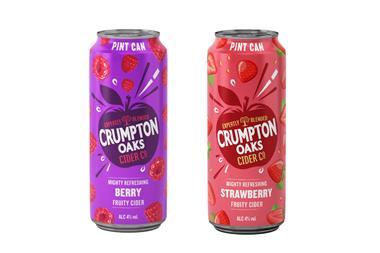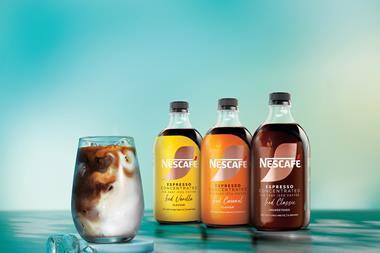Tesco claims it is taking the profit hit on its new ‘discount’ milk. If that’s so, it won’t last for long – spelling trouble for dairy farmers.
The launch of Robert Wiseman’s Fresh’n’Lo in all Tesco stores last week spurred great media interest and raised many questions. Here was a new line selling at 10p per litre below the cost of standard milk. What were they doing? Why was it a Robert Wiseman milk and not Tesco Value? What would be the response from other retailers? What did it mean for farmers? Where did it leave dedicated pools? Where would the discounters go with their price now? What about doorstep delivery?
At the NFU we were not expecting this, but it has been clear for many weeks that competition at the retail level has intensified, and if it was not exactly a price war, it is now! We have seen fuel as well as staple foods being used to lure in consumers, and milk has been used in the past to not only win customers from other retailers, but away from doorstep delivery. We should not therefore be surprised that milk has again been devalued.
What is surprising, though, is the scale of the cut in the price of milk and the introduction of a cheap line that is not temporary but a long-term commitment by Tesco to sell milk at the same price as discounters. The response from Asda, Morrisons and Sainsbury’s was predictable; cutting the price by a massive amount, undercutting Tesco by 6ppl-7ppl. They did not have the means to introduce a cheap line at such short notice, but slashed the price of Cravendale. Will they in turn launch cheap milk lines?
Tesco says it is taking the hit, and the discount is coming from its margin. The implication is that farmgate price will not be affected, so it is nothing to worry about. I wish that were true! We know from bitter experience that retailers do not take a hit on margins for long, and soon start recovering such losses from the supply chain.
Has the hard work over the past three years, building direct supply chains between farmers and retailers been wasted? No. I believe retailers still value the good PR of such models, and it is very easy to monitor the real effect on farmgate prices due to their transparency. Ironically, as things stand the only farmers that have a degree of protection due to a proper milk contract are the Tesco suppliers, where a cost-tracker and market-tracker are used in price negotiations.
All other dairy farmers are vulnerable to deductions from their milk cheque as their milk buyer sees fit. However, I worry about the effect of Fresh’n’Lo’ on ordinary milk sales, and whether it will fly off the shelf at the expense of the Tesco Sustainable Development Group milk pool.
As things stand, the acute shortage of milk (especially at this time of year) means there is no chance of any cheap milk being available, and that will continue for some time. However, dairy farmers need extra money to cover rapidly rising costs that are eroding most if not all of the increases they have enjoyed in milk price since last summer. Suspicion and acute lack of confidence in the dairy industry, despite milk price rises of about 8ppl in the past 12 months or so, have now been shown to be well placed.
Where will this all end? The basic cost of production (based on oil) has risen globally but retail price wars lull consumers into a false sense of security, which will not last as supply chains, which are not built overnight, are unable to survive at the prices demanded of them. The consumer will ultimately not only pay the price, but find choice will also be limited.
Gwyn Jones is chairman of the NFU dairy board
The launch of Robert Wiseman’s Fresh’n’Lo in all Tesco stores last week spurred great media interest and raised many questions. Here was a new line selling at 10p per litre below the cost of standard milk. What were they doing? Why was it a Robert Wiseman milk and not Tesco Value? What would be the response from other retailers? What did it mean for farmers? Where did it leave dedicated pools? Where would the discounters go with their price now? What about doorstep delivery?
At the NFU we were not expecting this, but it has been clear for many weeks that competition at the retail level has intensified, and if it was not exactly a price war, it is now! We have seen fuel as well as staple foods being used to lure in consumers, and milk has been used in the past to not only win customers from other retailers, but away from doorstep delivery. We should not therefore be surprised that milk has again been devalued.
What is surprising, though, is the scale of the cut in the price of milk and the introduction of a cheap line that is not temporary but a long-term commitment by Tesco to sell milk at the same price as discounters. The response from Asda, Morrisons and Sainsbury’s was predictable; cutting the price by a massive amount, undercutting Tesco by 6ppl-7ppl. They did not have the means to introduce a cheap line at such short notice, but slashed the price of Cravendale. Will they in turn launch cheap milk lines?
Tesco says it is taking the hit, and the discount is coming from its margin. The implication is that farmgate price will not be affected, so it is nothing to worry about. I wish that were true! We know from bitter experience that retailers do not take a hit on margins for long, and soon start recovering such losses from the supply chain.
Has the hard work over the past three years, building direct supply chains between farmers and retailers been wasted? No. I believe retailers still value the good PR of such models, and it is very easy to monitor the real effect on farmgate prices due to their transparency. Ironically, as things stand the only farmers that have a degree of protection due to a proper milk contract are the Tesco suppliers, where a cost-tracker and market-tracker are used in price negotiations.
All other dairy farmers are vulnerable to deductions from their milk cheque as their milk buyer sees fit. However, I worry about the effect of Fresh’n’Lo’ on ordinary milk sales, and whether it will fly off the shelf at the expense of the Tesco Sustainable Development Group milk pool.
As things stand, the acute shortage of milk (especially at this time of year) means there is no chance of any cheap milk being available, and that will continue for some time. However, dairy farmers need extra money to cover rapidly rising costs that are eroding most if not all of the increases they have enjoyed in milk price since last summer. Suspicion and acute lack of confidence in the dairy industry, despite milk price rises of about 8ppl in the past 12 months or so, have now been shown to be well placed.
Where will this all end? The basic cost of production (based on oil) has risen globally but retail price wars lull consumers into a false sense of security, which will not last as supply chains, which are not built overnight, are unable to survive at the prices demanded of them. The consumer will ultimately not only pay the price, but find choice will also be limited.
Gwyn Jones is chairman of the NFU dairy board














No comments yet